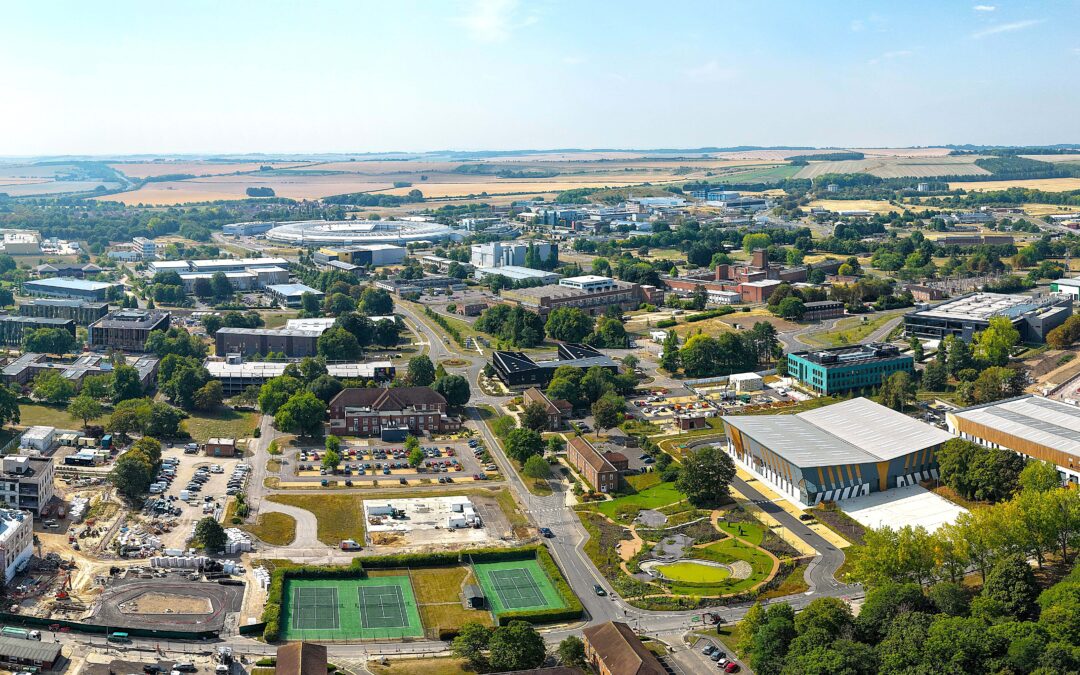- Harwell Science Campus becomes the first science campus to adopt a commercial smart grid, providing sustainable power to thousands of scientists, engineers and innovators
- By avoiding tens of millions in grid reinforcement works, SNRG’s smart grid will unlock £300m investment as part of one of the most ambitious campus expansions in the world, tripling lab space and advanced manufacturing facilities
- Harwell occupiers will access solar power at a price that is 35.6% below the 2024 UK average, as well as avoiding 230 tonnes of carbon in the first year alone
- SNRG’s fully-funded smart grid model provides a financial and technical blueprint to help industrial and commercial organisations to mitigate cost and delays associated with grid reinforcements at new developments and expansions.
Harwell Science Campus has signed an exclusive agreement with energy infrastructure company SNRG, to design, fund and operate a smart grid, making it the first UK science campus to install such technology in a commercial application. The project will provide sustainable power to the campus, unlocking lower energy costs and accelerating over two million square foot of expansion.
Home to over 7,000 scientists, engineers and innovators across more than 250 organisations, Harwell’s current £300m investment plan to triple the amount of available lab space and advanced manufacturing facilities, is one of the most ambitious campus developments in the world.
The smart grid is central to this growth, providing a fast and future-ready alternative to conventional grid connection and reinforcement which is estimated to take more than` a decade and costs tens of millions to deliver, ensuring Harwell’s expansion is both viable and sustainable.
Harnessing unused capacity, storing excess solar power in communal batteries and managing demand through advanced monitoring and AI-driven optimisation, SNRG’s solution gives the Harwell science and innovation community immediate access to the capacity they need to grow faster, more cost-effectively and with a lower carbon footprint, cementing Harwell’s role as a powerhouse of UK research and innovation.
Grid connection delays are now recognised as one of the biggest barriers to UK growth and decarbonisation objectives, with some industrial users facing wait times of over a decade[1]. SNRG’s smart grid can unlock capacity quickly and affordably – supporting UK industrial growth, cutting carbon and cost for end users, and offering a scalable model that can be applied to new developments and site expansions.
Additional benefits include:
- Lower energy costs: Harwell occupiers will access solar power 35.6% below the 2024 UK average, in a market where prices are already 113.7% above the European average.
- Smarter capacity management: The smart grid uses an AI-powered optimisation engine to dynamically assign excess capacity across the smart grid to flexible assets such as EV chargers, ensuring businesses can access affordable reliable power.
- Lower-carbon operations: Rooftop solar PV and communal battery storage will save an estimated 230 tonnes of CO₂e in the first year of full operations alone.
The first buildings connected to the smart grid are expected to be energised in November 2025, with the smart grid roll out taking place over the next five years.
Dan Pagella, Senior Director of Asset Management at Harwell Campus said:
“Harwell is home to some of the world’s most advanced science and technology research organisations and it’s vital that we’re able to provide the sustainable infrastructure they need to succeed.
Energy costs, capacity and carbon reduction are critical issues for our campus members and the SNRG smart grid addresses all three. This pioneering technology allows us to expand sustainably and at pace, while offering our members lower-cost, lower-carbon electricity. It’s an important step forward for Harwell and for the UK’s wider science and innovation economy.”
Shane Hussain, SNRG CEO, said: “Our recent announcement at Otterpool Park and now our partnership with Harwell demonstrate SNRG’s unique ability to deliver innovative energy infrastructure for the UK’s largest and most ambitious developments.
Grid connection challenges are increasingly a barrier to growth across the country, and we are committed to providing solutions that unlock capacity, accelerate delivery and lower costs. By designing, funding and operating smart grids that combine AI optimisation, onsite generation and long-term infrastructure backing, we’re enabling landmark projects like Harwell to expand sustainably while delivering real benefits to tenants and the wider UK economy.”
[1] Industrial Decarbonisation Research and Innovation Centre, ‘Grid constraints and industrial decarbonisation’, 2023
Photo credit : James Singleton



